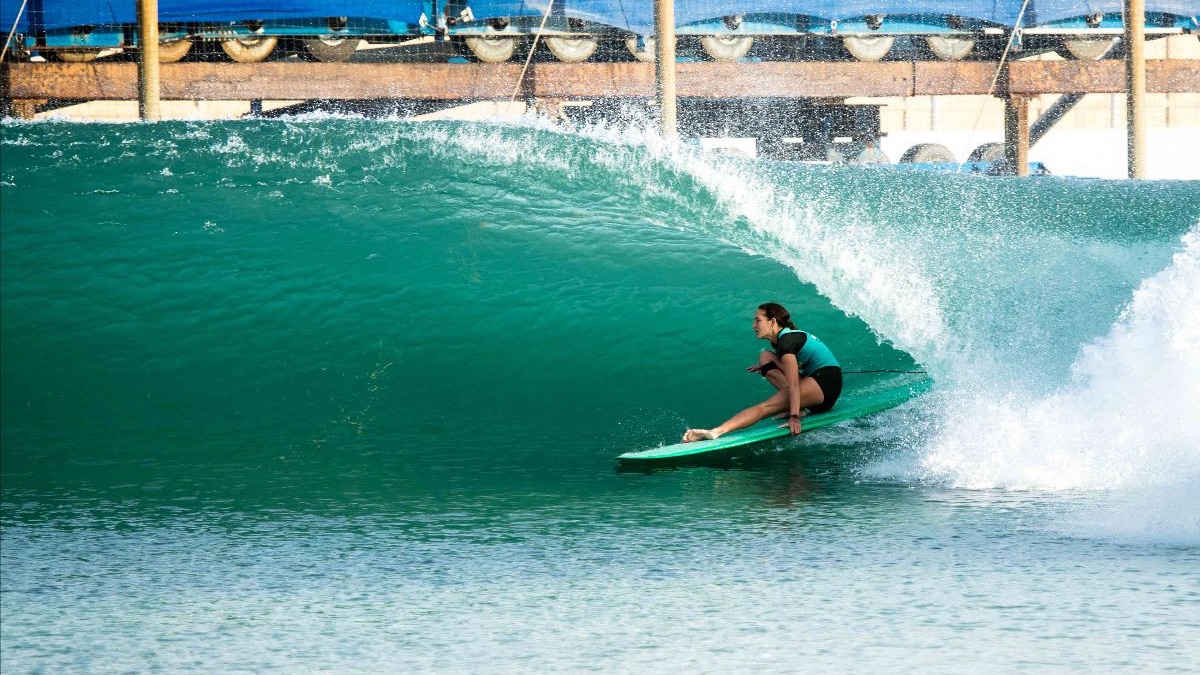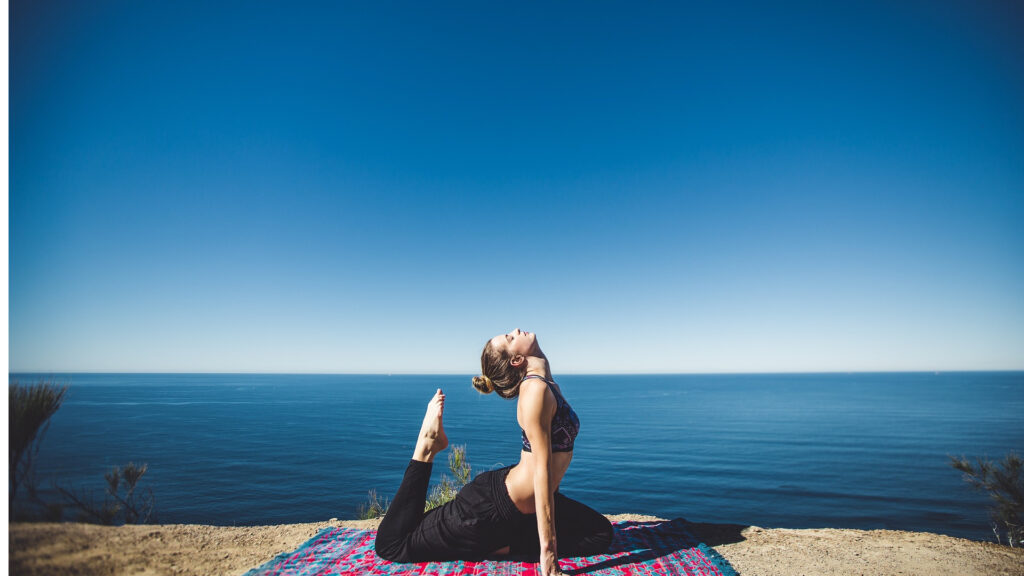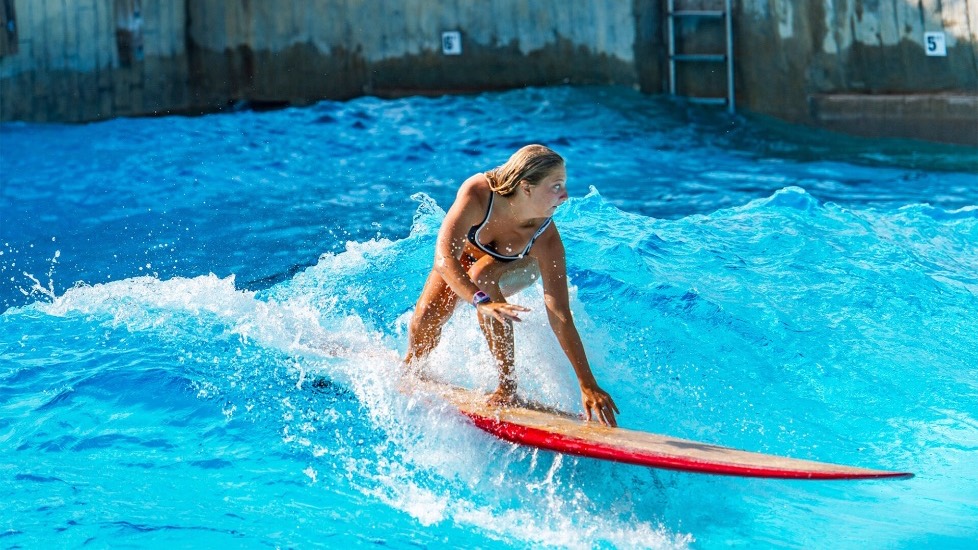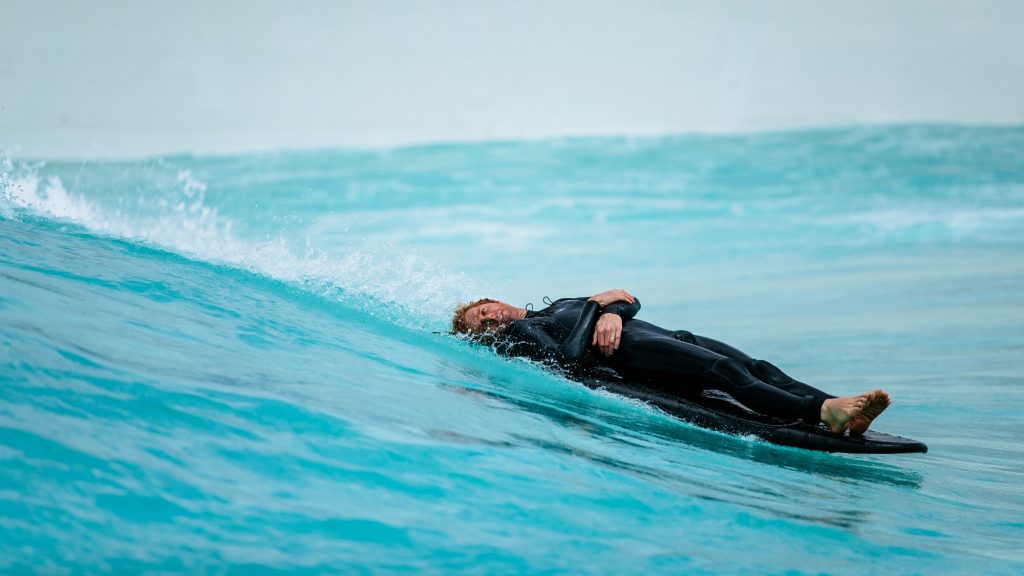Here’s how longboarders can enhance their surfing outside of the pool

We’ve all seen surfers practicing their pop-ups on the shoreline, most of us were one of them at one time or another. But regardless of how they may look, the truth is that the benefits of on-land-surf prep cannot be understated.
Whether it’s utilizing specific equipment at the gym to build your physical strength and or focusing on improving your mental strength and fortitude, there are many ways to get some practice in when you aren’t able to get in the ocean.
Here are my top strategies for building your surf skills land side.
Land Drills – Your Balance Foundation and Builders
It’s hard not to be in complete awe when watching women like Kelia Moniz effortlessly dancing on her board. But behind every great surfer is countless hours of training and preparation. While it can be hard to duplicate the intensity of a proper session, balance workouts are the key to perfecting your cross-step and improving your techniques.
I learnt so much from Dancelightly’s surf retreat, it opened my eyes to the numerous ways to enhance my abilities on land.
The beauty of all these land drills is their accessibility. Most gyms will have a Bosu ball or balance board for you to practice with. Yoga block drills can be done from the comfort of your own home, and for those who want a more structured approach to land-based surf training, Wave pools offer specialized programs that can take your skills to the next level. All of them build your strength and balance for times when you’re not near the ocean.

Bosu Ball
Don’t be fooled by its unassuming shape as I was the first time I used one, the Bosu ball is a test of balance, stability, and coordination.
The unstable surface of the Bosu ball requires you to actively engage your core muscles and make micro-adjustments to maintain balance. This leads to improved overall stability and balance, which translates amazingly when you’re on the board.
Balance beam (or a pipe/log)
You can really take it back to basics with this one, a simple 2×4 or tree log will serve you just as well as the balance beam at your gym. I recommend starting on one with a flat surface that is not too high from the ground as you find your dancing feet for your cross step.
The purpose of this exercise is to workout what feels most natural for you when cross-stepping. We are all different shapes and sizes, so everyone will have their own style when taking steps on the board – there’s no right or wrong, it’s what feels best for you.
Once you find a position you’re comfortable with practice, practice, practice. The aim is to complete this drill without looking down at your feet. Work on building up your speed as well as your backwards movement, the idea here is to lock in that muscle memory. When you’re ready, graduate up to a rounded surface, like a log or pipe for increased difficulty.

Yoga Blocks
For those that have no 2×4’s or logs to hand, or for those who like to practice indoors, yoga blocks are another way to further develop your balance.
Lay them out in a straight line and practice your steps back and forth, slowly building up your speed. The narrow width helps teach you to keep your balance centered whilst building your bodily awareness.
Unlike the Bosu ball, the key to maintaining balance here is maintaining an even distribution of weight on either side of the axis.
This is my favorite drill for rainy days, when I can’t quite motivate myself to make it to the gym but still want to practice from home.
Balance Board
You’ve definitely heard of this one and for good reason, the balance board is every surfer’s trusty land drill companion. The beauty of this equipment is in its versatility, not only can you use it to work on your balance, but also build arm strength, work on your pop up and even knee dips. Its changeable center of balance emulates the feel of the waves and builds your ability to correct yourself when unbalanced.
I get into my surf stance and practice controlling the board by transferring my weight back and forth. By controlling the board with my back foot, I’ve noticed a huge improvement in my turns when out on the water.
Longboard Surf Replicator
Whilst no practice will ever beat being in the water itself, a surf replicator comes in pretty close. The instability of the surf replicator challenges your muscles to work harder to maintain balance, resulting in a true test to your balance skills. Start off on the easiest setting until you find your center, then work your way up to the one with the least stability.

Cross Training – Surfing’s Partners in Crime
Pilates and yoga complement surfing like few other exercises. With seasoned pros like Kelly Slater as old school champions of these exercises, you’ll reap the benefits of incorporating them into your land work. The improvements I’ve seen in myself surprised me, and I cannot recommend the practice of either enough.
With their shared emphasis on breathing, flexibility, balance and bodily awareness, yoga and Pilates embody the skills that are vital in surfing. Both exercises are incredibly accessible for those who cannot make it to a studio for class, there exist a plethora of guided lessons online.
Editor’s Note: We invited Emma Bukowski from noseridersurf.com to share a few land-based surf training techniques to help keep you in shape for your next session.
Related Coverage
